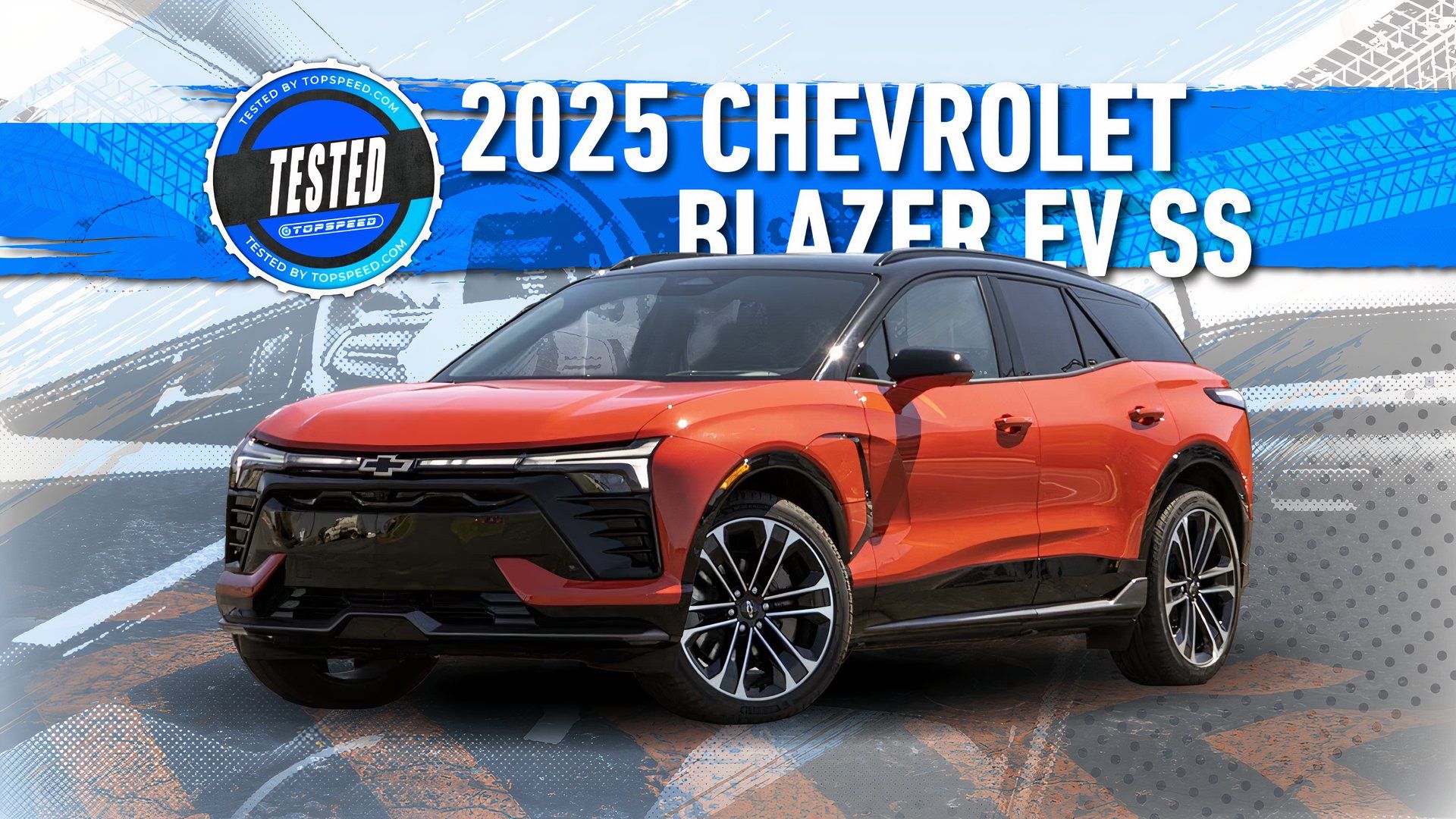I was having a conversation with Yuri Tereshyn, from The Straight Pipes YouTube channel, about projection-based infotainment systems versus native interfaces. He argued that Apple CarPlay is what splits the difference between a good user experience and an awful one, while I was trying to explain to him why, in the case of electric vehicles (EVs), you’re better off with a native infotainment system.
This was all happening during the first drive launch event of the 2025 Chevrolet Blazer EV SS, a vehicle which, just like all of GM’s latest EVs, makes do with a fully native setup. It was a relevant debate, because one week prior, I was also speaking with Lucid‘s lead software integration engineer about the decisions automakers currently have to make regarding projection apps. Turns out the very conversation Yuri and I were having is also ongoing behind closed doors. So, what’s better? A projection-based system that allows you to use Android Auto and Apple CarPlay? Or a native infotainment system that allows you to download your apps directly to your car?

Related
2025 Chevrolet Blazer EV SS First Drive: Carrying 64 Years Of American Performance On Its Shoulders
Chevy’s first-ever all-electric SS model packs plenty of straight-line firepower, but it’s also a fantastic handler.
Projection-Based Systems Are Currently The Most Popular
Before we dig deeper in search of answers, perhaps it’s best if we begin by defining what projection-based systems are and why they are different to a native, subscriber-based system. As I write this, projection-based systems are the most widespread type of infotainment interface.
Its name comes from the fact that it allows you to project the contents of your phone directly into the car’s infotainment system through apps like Android Auto and Apple CarPlay. The projection can either be done by physically connecting your phone to the car using a USB cable, or, as is becoming more and more the case, wirelessly through Bluetooth and Wi-Fi technology.
The obvious benefit of such technology is that it allows you to have access to your most useful phone apps on the car’s main screen, like your contacts, text messages, calendars, music apps like Spotify or Apple Music, as well as your favorite navigation app like Google Maps, or Waze. Both Apple and Google have perfected these apps over time to streamline their operation, as well as closely working with automakers to have them better integrate the cars.
But these apps remain a projection of your phone, meaning they’re not part of your car’s infotainment system. If, for instance, the automaker releases an update for your car’s music player, neither Android Auto nor Apple CarPlay will notice. There’s also a lot of data collection going on, allowing both Apple and Google to have access to your driving-related habits and behaviors. Finally, in the case of EVs, since projection apps are not part of the car’s default system, they cannot predict your available range, correlate it with their navigation apps, nor can they make suggestions for public charging on the go. Yes, Google Maps can show you where public chargers are located on the map, but it pretty much ends there.
Native Infotainment Systems Regroup Everything Under One Roof
Native infotainment systems, rather, do without Android Auto and Apple CarPlay. That’s because the system itself allows you to create a user profile and download your favorite apps directly to your car. While still relatively new in the industry, this sort of system has been used by Tesla since the very first Model S came out in the early 2010s, making it the pioneer of the genre. Today, other automakers like General Motors, Volvo, and Rivian have attempted to go down that path as well, using their own proprietary, Google-based interface.
The benefits of this technology are to allow your car to handle all of your connectivity features, and never have to look at your phone again while driving. Since your profile is already set up with your favorite navigation and audio apps downloaded, and since most new cars already come with mobile apps in which you can sync a driver profile and its preferences, each time you enter your car, everything is right there in your reach.
Native infotainment systems effectively transform your car into a giant device, which is the natural evolution of things in a world where we’re all connected to a device in one way or another. The system also allows you to download additional features you simply can’t get with projection apps, like YouTube, games, or streaming services like Netflix.

Related
Why GM Is Keeping CarPlay For Its ICE Models
GM’s recently updated ICE models all get essentially the same Google-based infotainment system as its EVs. Yet, Apple CarPlay remains. Why?
Finally, for EVs, since native infotainment systems are actually part of your car, they can predict how much range you’ve got left based on your navigation settings and how much you’ll have left when you arrive at your destination, suggest public fast charging stops, recommend how long to stay at that charger, and automatically precondition the car’s battery before initiating the charge cycle. Projection apps cannot do this, at least not yet.
But What About The Data?
And what about data collection? If Apple and Google aren’t taking it anymore, then does it mean it’s going straight to the carmaker? Yes, which brought Yuri and me to the root of our argument. The core reason more and more automakers are contemplating taking control of the entire connectivity aspect of their cars is to avoid third-party companies like Apple and Google from leaving with the data. Automakers would much rather keep all of that data for themselves.
At the moment of writing this story, automakers are restricted by strict regulations about selling or sharing your data. The information collected, automakers say, serves solely to improve their vehicles through over-the-air (OTA) updates. But what about cybersecurity risks?
“Would you rather trust Apple, or any other automaker to safeguard your data? I choose Apple. Plus, CarPlay is like a buffer between my phone and my car. I don’t need to log into my car on top of that. Maybe it’s a false sense of security, but if I don’t have to, I’d rather not give my information to an automaker at all!”
– Yuri Tereshyn, The Straight Pipes
Yuri’s got a good point. Some users may not want to go with a native infotainment system simply because of the hassle of having to log into that system. Sure, dealerships take care of much of that pain point when you purchase a new car through pre-dealer inspections, and once you’re all set up, you technically never need to fiddle with it again. In GM’s case, an existing Google account is all it takes.
But there’s another element surrounding native systems that could prove to be a turn-off to users: subscriptions. GM currently sells its new vehicles with free OnStar and connectivity during the first few years of ownership, but once all of that expires, you’ll need to pay in order to keep these features going.

Related
Review: One Feature Allows The Honda Prologue To Be More Appealing Than Its GM Twins
Even if it’s not a “real” Honda, the 2025 Prologue manages to hold its own.
Yuri and I agreed that the best of both worlds would be a vehicle that offers both the possibility of logging directly into the car’s system, but that also preserves the possibility to project apps like Android Auto and Apple CarPlay. The Honda Prologue is one such vehicle. Built as the result of a joint venture between General Motors and Honda, it’s essentially a rebadged Chevrolet Equinox EV equipped with a native infotainment system. Yet, Honda chose to leave Android Auto and Apple CarPlay connectivity for those who don’t yet feel comfortable logging into the system.
Of course, consumer reaction and demand will dictate which system will prevail. But GM is currently dealing with a lot of backlash regarding its decision, and has increased its dealer and in-car education surrounding its system. A recent update has added a prompt in GM EVs to remind the driver to set up their profile in the system, followed by a rather easy step-by-step procedure including a QR code. I have personally logged into all the GM EVs that I have tested and have no issue with the system. And I personally am not intimidated by the idea of an automaker collecting my data. But for people like Yuri who don’t yet trust the auto industry’s data-collecting practices and the cybersecurity that surrounds it, projection apps remain the clear way to go.














